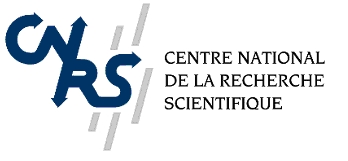|
CNRS - CENTRE NATIONAL DE LA RECHERCHE SCIENTIFIQUE |
|
 CNRS/Ecole Polytechnique The “Laboratoire de Physique des Interfaces et des Couches Minces” (LPICM) is a joint research unit between Ecole Polytechnique and CNRS, well known world-wide for its expertise in thin film deposition by plasma-type techniques as well as for its expertise in film characterisation by optical means (ellipsometry, scatterometry, Raman scattering…).The laboratory that now comprises about 60 persons (of which ~ 25 permanent, employed by CNRS or EcolePolytechnique) has been involved for 17 years in the synthesis of amorphous, microcrystalline and polycrystalline semiconductors (including carbon and carbon alloys) as well as in the synthesis of dielectric materials for use in flat panel displays and large area electronics. In the last four years, the laboratory became involved in carbon nanotube synthesis by plasma-assisted techniques at low temperature. The carbon nanotubes group is now composed of 3 researchers, 2 post-docs and 2 PhD students.The LPICM has many collaborations with industries (Air Liquide, St Gobain, Philips, Thales…) as well as with other institutional entities (LETI in particular).CNRS/UMR 137 (Unité Mixte de Physique). A research team from LURE (Laboratoire pour l’Utilisation du Rayonnement Electromagnétique), the now closed French synchrotron facility, joined the CNRS/UMR 137 that is a collaboration framework involving both CNRS (Centre National de la Recherche Scientifique) and THALES (Thalès Research and Technology). This team got expertise by means of 15 years of experience and development in Deep X-ray Lithography and associated LIGA micro technology.
CNRS/Ecole Polytechnique The “Laboratoire de Physique des Interfaces et des Couches Minces” (LPICM) is a joint research unit between Ecole Polytechnique and CNRS, well known world-wide for its expertise in thin film deposition by plasma-type techniques as well as for its expertise in film characterisation by optical means (ellipsometry, scatterometry, Raman scattering…).The laboratory that now comprises about 60 persons (of which ~ 25 permanent, employed by CNRS or EcolePolytechnique) has been involved for 17 years in the synthesis of amorphous, microcrystalline and polycrystalline semiconductors (including carbon and carbon alloys) as well as in the synthesis of dielectric materials for use in flat panel displays and large area electronics. In the last four years, the laboratory became involved in carbon nanotube synthesis by plasma-assisted techniques at low temperature. The carbon nanotubes group is now composed of 3 researchers, 2 post-docs and 2 PhD students.The LPICM has many collaborations with industries (Air Liquide, St Gobain, Philips, Thales…) as well as with other institutional entities (LETI in particular).CNRS/UMR 137 (Unité Mixte de Physique). A research team from LURE (Laboratoire pour l’Utilisation du Rayonnement Electromagnétique), the now closed French synchrotron facility, joined the CNRS/UMR 137 that is a collaboration framework involving both CNRS (Centre National de la Recherche Scientifique) and THALES (Thalès Research and Technology). This team got expertise by means of 15 years of experience and development in Deep X-ray Lithography and associated LIGA micro technology.
Role in OPTHER
CNRS/Ecole Polytechnique will contribute deposition of metal catalyst particles and carbon nanotube synthesis by plasma-assited chemical vapour deposition, carbon nanotube characterisation by TEM, AFM and Raman techniques.CNRS/UMR 137 will contribute to the project performing the LIGA process for the realization of the metalliccomponents of the THz amplifier and source (slow wave structures) or to the realization of metallic stencils for etching process of Cu crystals for the same purposes.
|
|
 Project
Project  Partners
Partners  CNRS
CNRS  Project
Project  Partners
Partners  CNRS
CNRS